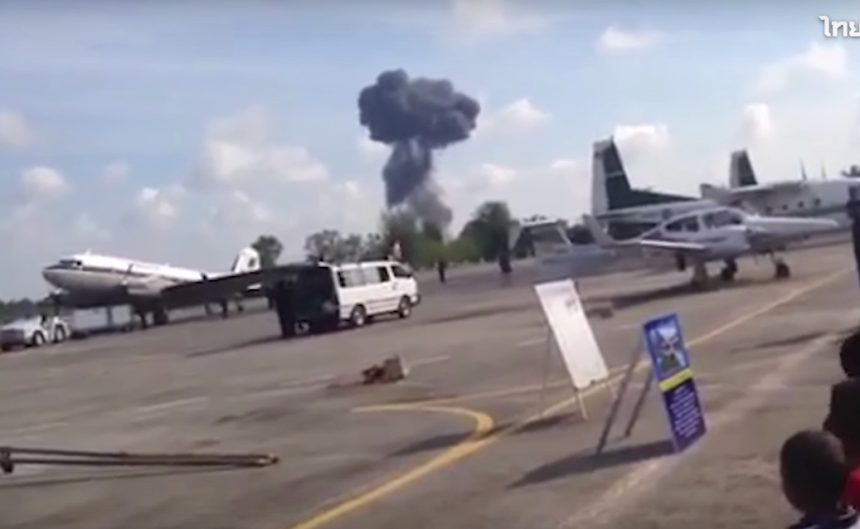A Royal Thai Air Force JAS-39 Gripen has crashed in Thailand. Pilot dead.
On Jan. 14, at 09.27 LT, a RTAF JAS-39 Gripen crashed at Hat Yai Airport, Thailand, during an airshow for Thailand’s national Children’s Day.
The 35-year-old pilot who was flying the Swedish-made jet did not eject and died in the incident.
Footage of the accident shows the Gripen starting a slow aileron roll; once inverted, the aircraft fails to complete the maneuver, stops rolling and takes a nosedive crashing near the airfield’s runway.
Thailand purchased 12 JAS-39C/D Gripen multirole jets in 2008, at a cost of about 70M USD apiece.
Related articles
















